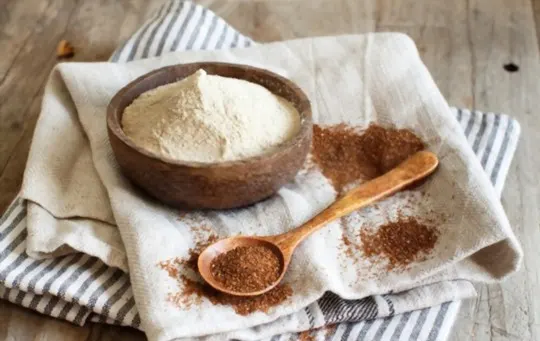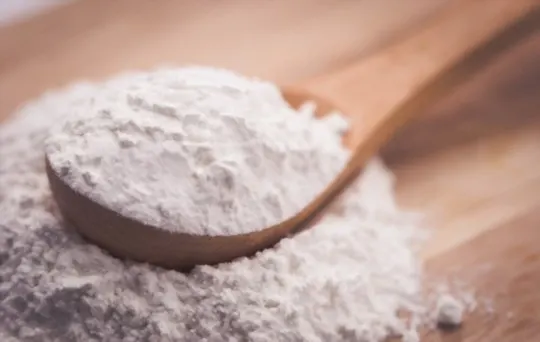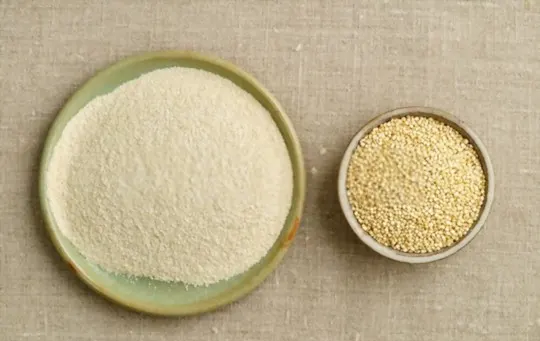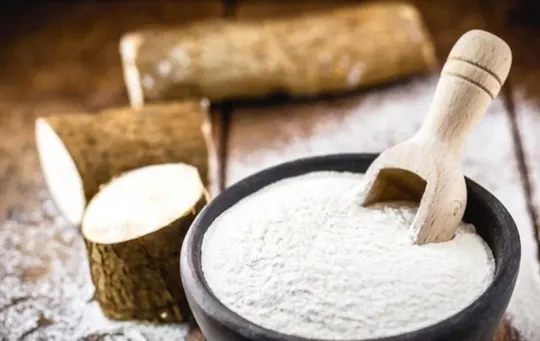Gluten-free baking just got a whole lot easier.
Gone are the days of settling for gritty textures or cardboard flavors.
We’ve been there, scouring the internet and experimenting in our own kitchens to make gluten-free treats that actually taste good.
And guess what? We struck gold. Not literal gold, but the next best thing: five dynamite substitutes for gluten-free flour that’ll turn your baked goods from “meh” to “more, please!”
Quick heads-up, these aren’t your usual suspects.
We’re talking game changers that even your gluten-loving pals wouldn’t guess are substitutes.
Ready to revolutionize your baking? Buckle up!

The 5 Best Substitutes for Gluten-free Flour
If you are looking for gluten-free flour options, then you’re in luck.
There are a number of alternatives to wheat flour that can be used as substitutes in baking and cooking.
These five options have the potential to provide a similar texture and nutrition to traditional wheat flour:
1 – Teff Flour

Teff flour is an ancient grain with a mild nutty flavor and crunchy texture believed to have originated in Ethiopia.
With a protein content higher than wheat grains, teff is a gluten-free flour that can be used as a substitute for regular wheat flour in most recipes.
It pairs particularly well with sweet dishes, such as muffins and cookies, but it can also be used to make crepes and pancakes.
The tenderness of the grains makes this flour suitable for baking cakes.
Its nutty taste and one-of-a-kind grain structure add a unique taste to all baked goods.
Teff flour should be added gradually to doughs or batters that already contain other gluten-free flours; you should use three parts of other flours to one part of teff when substituting regular wheat flour so that the batter or dough does not become dry.
2 – Brown Rice Flour

Brown rice flour is gaining in popularity as an alternative to regular wheat flour.
This flour is made from finely ground brown rice, which is naturally gluten-free and contains a wide variety of nutrients, including manganese, phosphorus, copper, and magnesium.
It has a light nutty flavor and a slightly gritty texture that makes it a culinary delight.
When baking cakes or other gluten-free recipes, it can be easily substituted for traditional wheat flour in exact proportions.
Bakery items like bread, pies, and muffins take on an extra light when brown rice flour is used compared to standard gluten-free flour.
If you’re looking for an easy way to add more nutritional value to your food while still enjoying the same delicious flavors and textures, try adding brown rice flour to your meal plan.
3 – Quinoa Flour

Quinoa flour is a naturally gluten-free and nutritious flour made from grinding dried quinoa.
This versatile, high-protein grain contains all the essential amino acids, vitamins, and minerals that make it an ideal alternative to regular wheat flour.
Quinoa flour has a nutty flavor with a hint of sweetness and is slightly coarser in texture than wheat flour.
It can be substituted for regular or gluten-free white flour in many recipes; however, because of its absorbent qualities, you may need to adjust the amount of liquid when making baked goods.
For example, you may need to reduce up to 25% of the liquid called for in your recipe if replacing wheat with quinoa flour.
4 – Arrowroot Flour

Arrowroot flour is an incredibly versatile ingredient that is a popular gluten-free alternative to wheat flour.
This powdery starch consists of fiber, proteins, and minerals and has been around for centuries – even Christopher Columbus gave credit for arrowroot’s medicinal properties on his voyage to the Caribbean.
When used in baked goods or as a thickening agent, it produces a chewy end product with less elasticity than gluten-containing products.
For example, using arrowroot in a muffin recipe yields a deliciously soft and moist result.
Replacing wheat flour with arrowroot in your baking indicates one teaspoon of arrowroot for every one tablespoon of wheat flour – so flavoring your recipes just got much easier.
5 – Tapioca Flour

Tapioca flour is a natural, gluten-free alternative to regular flour made from the root of the Manioc plant, also known as Cassava.
It has a fine texture and is flavorless so it can be used in both sweet and savory recipes.
Although it’s not a true substitute for wheat flour because it does not contain any gluten, you can use tapioca flour as a great replacement for gluten-free baking.
It helps to bind ingredients when baking, creating a light and airy finish.
In addition, tapioca starch works very well in sauces and puddings due to its ability to thicken liquids while staying smooth.
While tapioca flour has slightly different characteristics than wheat flour, it can still provide an excellent alternative in recipes that call for all-purpose flour.

Leave a comment